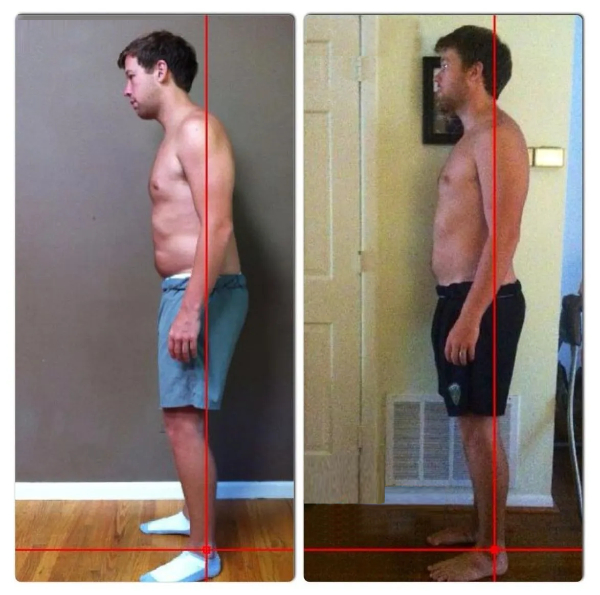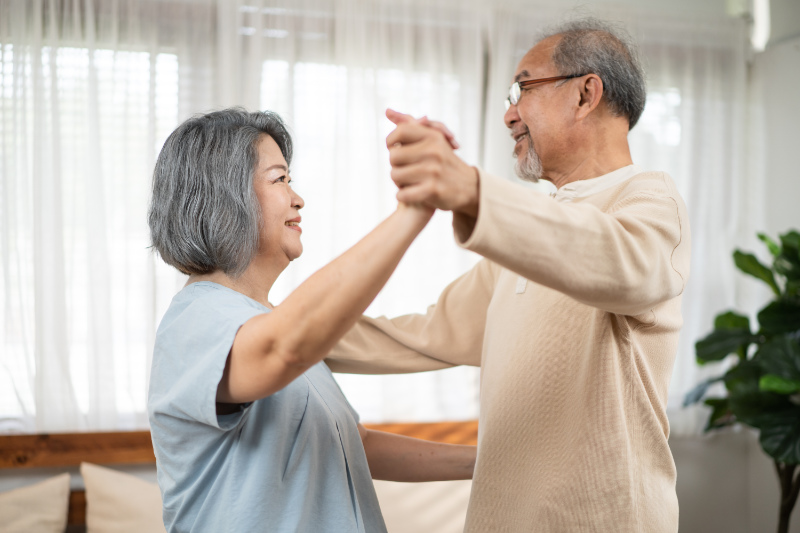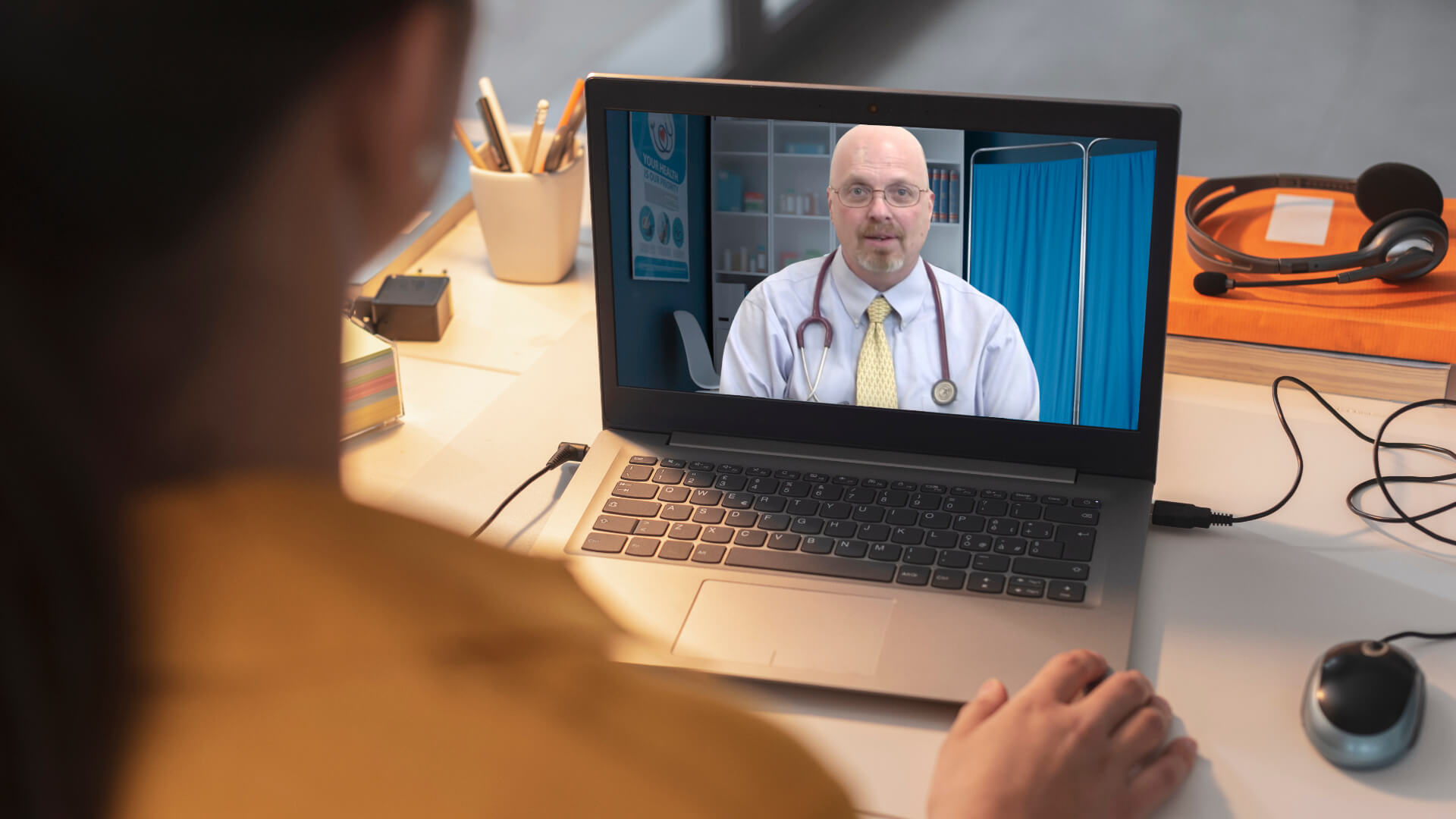Learn how to stop your pain
Posture Alignment Therapy
Posture issues can cause pain in the most unexpected places and I can teach you to treat the cause, not just the symptom – naturally.

Posture Alignment Therapy
Pain Treatment Caused by Posture Issues
Junga Health Posture Therapy is helps you identify the specific posture issues that are causing your pain and then learn how to finally fix the actual source of your chronic pain, not just treat your symptoms.
 PAS Certified by the Egoscue Institute®, the Postural Alignment Specialist recognizes that fundamental anatomical, physiological and bio-mechanical principles govern the human musculoskeletal system. The actual therapy is simple and the results are amazing with a 96% success rate!
PAS Certified by the Egoscue Institute®, the Postural Alignment Specialist recognizes that fundamental anatomical, physiological and bio-mechanical principles govern the human musculoskeletal system. The actual therapy is simple and the results are amazing with a 96% success rate!
This very effective program is designed to treat chronic pain and restore function to your body using powerful yet simple corrective exercises and has helped me overcome chronic back-pain.
Note: This is not physical therapy, chiropractics nor manipulation or injections/lasers medications.
Areas of Treatment
Certified by the Egoscue University and specializing in ‘The Egoscue Method’, I can help you find, and finally fix the REAL causes of your pain.
Common Conditions
- Low Back Pain
- Herniated Discs
- Sciatica
- Spinal Stenosis
- Neck Pain
- Hip Pain
- Knee Pain
- Shoulder Pain & Rotator Cuff Pain
Other Conditions
- Arthritis
- Arm Pain
- Back Pain
- Bunions
- Carpal Tunnel Syndrome
- Chronic Athletic Injuries
- Disc Problems
- Fibromyalgia
- Headaches
- Herniated Disc
- Hip Pain
- Joint Dysfunction
- Joint Pain
- Knee Pain
- Leg Pain
- Low Back Pain
- Migraine Headaches
- Multiple Sclerosis
- Muscle Spasms
- Neck Pain
- Numbness
- Osteoarthritis
- Pain (chronic)
- Pinched Nerve
- Scoliosis
- Shoulder Pain
- Sinus Problems
- Tendonitis
- Tight Muscles
- Tingling Sensations
- T.M.J or TMJ Syndrome
- Whiplash
- Wrist Pain
Posture Alignment Therapy
How it Works
1
Digital Assessment
Once you have booked your online Consultation where you explain as detailed as possible where and with which movements the pain is felt. I will then take digital photos of your posture, (NOT X-RAYS!) perform gait analysis and then have you do a series of ‘Functional Posture Tests’.
2
Identifying Postural Dysfunctions
3
Corrective Sets of Exercises
Next, the computer analyzes your pain locations, severity of pain, body imbalance and any misalignment. It then creates a menu (set) of Corrective Exercises designed specifically for you, so that you can immediately begin reducing your pain.
4
Book Sessions and Succeed!
Pick and Book your Session Bundle and I will guide you through how to do each Corrective Exercise putting you back in control of your body. You will usually feel the difference (straighter, more balanced, pain reduction and a new awareness of your body) after your very first visit!
Client Successes
Note: Before becoming Junga Health the Posture Therapy arm of our site was trading as CTPainfree.
J.C.

Within 4 weeks JC’s knee and neck pain completely disappeared.
Janelle

Within 3.5 weeks Janelle was pain-free for the first time since she was 12 years old.
Janelle’s Success in the News
Katie

Within 5 weeks Katie was free from chronic hip and neck pain.
Ian

Within 3 weeks Ian’s lower back pain completely disappeared.
Start your journey
Book your free 15-min Consultation

Question & Answers about Posture Therapy
The Therapy
Equipment
Expectations
Egoscue Method®
What should I expect to happen during an appointment?
This is followed by a postural assessment, functional testing, and gait analysis using digital photos, to determine your compensations and dysfunctions that are causing your pain.
Through analysis using of this data and processing through our specialized software, we will pin-point the structural causes of pain and lack of motion.
You will then be taken through a series of Corrective Exercises to help eliminate the compensations and dysfunctions that are causing your symptom(s). After you have finished, you will be given a print-out of your Corrective Exercises “Menu” with the instructions for how to complete your Menu on your own. Clients will return on a weekly basis, receiving a new Menu each week, to continue the process of getting the body back to its original design blueprint and pain free. Posture photos will be taken every few visits to track the progress of your structural changes.
What is the benefit of doing my menu on a daily basis?
This statement resonates a lot because our clients are educated about posture and believe that doing their menu of Corrective Exercises everyday will save their bones, joints, muscles…etc…by supporting their alignment.
Everything benefits!
Can I do one or two exercises in my program without doing the rest?
The Postural Alignment Therapy process works very well when at least one time per day you get the Corrective Exercises done in the order that is listed.
After that, anytime during the day, you can trust your instincts and do any Corrective Exercises that feels good to you. Remember, you are part of the therapy process.
Do you use manipulation, instruments, or machines in your therapy?
How much money should I invest to be able to get my life back?
Most clients tell us that over the years they have spent hundreds and even thousands of dollars on treatments that didn’t work, yet they are still in pain…until they came to us!
So ‘cost’ is a relative term. But please consider these questions:
– How much have you spent on all the other treatments you tried, that didn’t work?
How much longer can you go on suffering in pain?
– What is the cost of missing out on doing the things you really used to enjoy?
– How much are you comfortable paying to identify the real causes of your pain?
– How much is it worth to you, to be taught how to fix your pain yourself?
– Is your pain costing you money through loss of work?
– If someone told you that you could be pain free for a certain dollar amount, what would that amount be?
Click here for our therapy cost and pricing options available.
What should I wear?
Please wear clothes that will allow for this to be a simple process. Please wear shorts. Women should wear a sports bra.
If you aren’t comfortable in a sports bra, please wear a tank top.
Will I have to purchase expensive equipment to complete my therapy?
How long will it take me to see/feel results?
I know it is hard to believe but the Postural Alignment Therapy we use has remarkable results right away. The very first day you do these simple to-do, tailored Corrective Exercises you will feel a difference.
Results will vary from client to client, and much of this is due to the frequency of the Corrective Exercises menu.
As you become more functional, your body will discover a new awareness and as long as the menu of Corrective Exercises are done, you will continue to gain new posture improvements and function week by week, month by month, year by year.
Will I feel any soreness in other places around my body as my body begins to straighten up?
You may encounter what we call “muscle awakening” and should diminish the more times your menu is finished. Don’t worry…it is completely normal and it is well worth it in the long run.
How long does it take to finish my therapy?
Remember, this is a process and usually takes 8-16 visits to get a hold of the postural dysfunction that has taken decades to show itself.
What is the Egoscue Method®?
Founded by Pete Egoscue (pronounced E-gos-cue) in 1978, the Egoscue® method uses a series of gentle exercises and stretches to correct misalignments and reintroduce proper body mechanics. Through performing an individually designed Egoscue exercise (e-cise) menu daily, clients take personal responsibility during their road to recovery. And, once postural deviations are corrected (by strengthening weak muscles and elongating tight or atrophied muscles) Postural Alignment Therapy permanently relieves chronic pain as muscles learn to perform their proper functions and to hold the body in a posturally-sound position.
A reduction in pain is often felt after just one session; however, a client’s full recovery is dependent on adherence to one’s daily exercise menu.
The Blueprint
By using a blueprint of this extraordinary platform as a guide, the goal of the Method is to eliminate disparities that can occur when injuries or negative lifestyle conditions affect the way the musculoskeletal system actually moves as opposed to its underlying structural parameters.
By restoring muscular balance, skeletal alignment and the harmonious interplay of internal systems, the body takes a quantum leap in healing power, stamina and physical capability.
The Postural Alignment Therapy is not a form of treatment that chases after short term, symptomatic relief. Rather, symptoms provide a common sense starting point, a working frame of reference based on each individual’s unique combination of strengths and limitations.
Our primary objective applies to everyone we seek to help—to eliminate musculoskeletal system disparities and the resulting postural dysfunctions that interfere with pain-free living.
The standing normal anatomical position
The grid’s structure is completed by the shoulder joints which are in a functional interactive relationship with the major joints below instead of being aligned vertically like the others, although they too (the shoulders) operate individually and as a pair on a fourth parallel horizontal plane.
Topped by the head, placed over the S-curved central spine that links the hips and shoulders, the grid allows upright posture and bipedal motion capable of a great range of movement.
In addition, there is only temporary incidental rotation in the pelvis, legs, knees and ankles. (Think of rotation this way: Looking straight down on your upright body from above, draw a imaginary clock face with your head in the center facing twelve o’clock.
In design position a straight line runs from hip joint to hip joint starting at nine o’clock and extending through the other hip joint, exiting at three o’clock.
In such a configuration, there is no rotation, but if the lines depart from nine and three, say ten and four, rotation is present as the hips move off the design plane. This analogy works for the other load-bearing joints and the big leg bones.
It is not unusual to find left-to-right pelvis rotation and right-to-left shoulder rotation.) The body is intended to rotate by twisting and turning, ascending and descending, in reaction to variations in the terrain and other temporary situations and then return to vertical alignment. When it remains stuck in rotation the integrity of the structure can be compromised.
As you probably have concluded by now, the load-bearing grid we have just described means that vertical and horizontal alignment is all-important to both the musculoskeletal system’s structural integrity, smooth functioning and full, pain-free capability.
What is the impact of a 'bad' posture?
An individual whose body deviates from this design must do so for a reason. That reason is, (in cases that do not reflect past injuries), a muscular imbalance in strength and/or flexibility. An individual’s standing, static posture provides essential information to our therapists in predicting what the body will do as it moves.
These predictions can be confirmed and often reinforced by observing the client’s gait, the way he or she strides forward, turns and executes other routine maneuvers. In the process, changes in muscle tension/length may be detected, along with atrophy of underutilized muscles or damage to over-used muscles that results when one group of muscles is repeatedly substituted for another that is more appropriate to the task. Such postural anomalies, we describe them in general as “dysfunctions,” directly impact joint mechanics.
The impact of postural changes affects individuals in different ways and at different rates. A person’s age, activity level, occupation and weight are just some of the factors that will help determine where and to what extent a person will be affected anatomically.
What is certain is that a given individual is highly susceptible to specific symptoms. The process begins with an alteration of normal joint mechanics. This alteration, or compensation, leads to a decrease in performance.
That decrease in performance could be expressed in the way you deliver a curve ball to a person having difficulty rising from a chair. Often these changes go unnoticed because the body unknowingly avoids the pain stimulus or the extra muscular demand. The mechanical changes eventually manifest themselves into a variety of pathologies and disorders if allowed to continue.
These can include, but are not limited to, inflammatory responses to overstressed tendons and bursa, non-congruency of joints surfaces, unequal loading of the intervertebral discs, laxity of ligaments, muscle pain and ischemia.
These problems are not limited to the musculoskeletal system. As the foundation of the body is removed from its most efficiently functioning position, the nervous, circulatory, respiratory and digestive systems can all be affected.
The internal organs can become disarranged or compressed, neural pathways are disrupted or impinged and venous and arterial blood flow can be compromised. Any one or a combination of these scenarios can contribute to a multitude of medical problems.
How does a Egoscue Method® certified PAS therapist help?
Then a plan for rehabilitation would focus specifically on the affected area and, if applicable, the joints above and below. Our assessment is to ignore the symptom as it relates to the cause of the pain. As mentioned previously the symptom never dictates our approach to therapy, but it is instead a temporary limitation. The body is a highly integrated structure.
By focusing on an area of pain or abnormality (i.e. edema, muscle tension), we are ignoring the rest of the factors in a very large equation.
The compensation that has occurred as a result of the individual’s dysfunction has appeared as a symptom in another area of the body. It is possible that the cause of a particular symptom is a structural/mechanical problem on the other side of the body.
As well as being a highly integrated structure, the body has a tremendous capacity for self-healing. To effectively facilitate that healing, we must first remove the noxious stimulus that has disrupted normal function. This is a major premise of Postural Alignment Therapy.
An individual who has experienced either some sort of trauma or who has had surgery or both is not beyond benefit from Postural Alignment Therapy. This individual has had some external dysfunction placed upon their existing dysfunction. The combinations of the layers of dysfunction can seriously impede the healing process. Cases in which surgery is performed to accommodate a chronic symptom will have the same outcome as therapy performed with the same goal. It will not impact the cause of the symptom and therefore the symptom will return. Traditional rehabilitation following trauma or surgery following trauma is often much slower than expected and both client and doctor are unhappy with the recovery. This is because although the trauma created the symptom, or accelerated its appearance, the body’s structural/mechanical dysfunction will not allow it to heal optimally.
The noxious stimulus is never removed. Even if a person has been physically altered due to surgery or trauma, the rest of the body is not relieved of its responsibility to execute its function. A body that lacks one of its components (i.e. meniscus, fused vertebrae), now more than ever needs the rest of the body to function as efficiently as possible to minimize the deficiency imposed upon it.
 We must then return to our “blueprint”. The individual is visually evaluated with the aid of a plumb line and background grid. The therapist who is highly trained to recognize structural and mechanical deviations of the body as a whole and does so without the use of diagnostic machines or specific manual muscle tests. Based on the client’s self reported history and the therapist’s observations, a series of functional demand exercises are developed. These exercises are designed to address the muscular imbalances and dysfunction leading to this individual’s structural deviations.
We must then return to our “blueprint”. The individual is visually evaluated with the aid of a plumb line and background grid. The therapist who is highly trained to recognize structural and mechanical deviations of the body as a whole and does so without the use of diagnostic machines or specific manual muscle tests. Based on the client’s self reported history and the therapist’s observations, a series of functional demand exercises are developed. These exercises are designed to address the muscular imbalances and dysfunction leading to this individual’s structural deviations.
The exercises emphasize the deeper muscles of the axial skeleton and pelvis as well as the more superficial muscles. They require no special equipment and are designed to strengthen the body functionally. Our primary source of resistance is the person’s body weight and the force of gravity. Our therapists do not administer “hands on” therapy. The client is instructed in a series of personalized exercises and then is expected to continue them on their own at home. Modifications are readily made whenever necessary. The home program prevents the client from developing a dependency on someone else while pursuing their own well being. Instead, they assume responsibility for their own health. This is another major premise of Postural Alignment Therapy.





